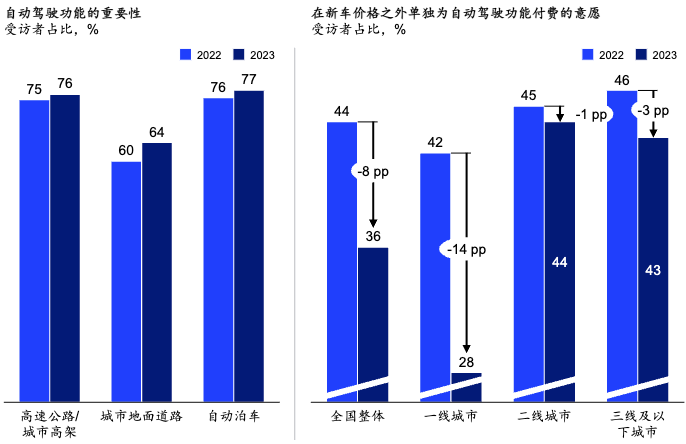Intelligent Driving Faces Strictest Regulations: Short-term Cooling for Long-term Health
![]() 04/18 2025
04/18 2025
![]() 358
358
The booming intelligent driving industry is poised for a cool-down.
On the evening of April 16, the Department of Equipment Industry of the Ministry of Industry and Information Technology (MIIT) issued an announcement titled "Promotion Meeting on Product Access and Software Online Upgrade Management of Intelligent and Connected Vehicles." The meeting centered on access and software online upgrade management for connected vehicles, urging automakers to enhance validation of intelligent driving systems, strictly prohibit exaggerated promotion, and assume responsibility for production consistency and quality safety.

(Source: Screenshot from MIIT)
Subsequently, a screenshot from a suspected WeChat chat, purported to be meeting minutes, circulated on Weibo, mentioning that 19 automakers and supply chain enterprise Huawei attended, with 12 enterprises presenting reports. The Department of Equipment Industry proposed multiple regulations focusing on three main areas: tightening promotion of intelligent driving capabilities, standardizing the use of these capabilities, and strictly managing the deployment and risks associated with intelligent driving functions.
Several digital and automotive bloggers shared the image, but it's worth noting that the image has since been removed from Weibo, casting doubt on its authenticity. A reporter from National Business Daily sought confirmation from BYD but received the reply, "It's the content of a closed-door meeting, and there is no official response for now."

(Source: Screenshot from Weibo)
However, the fact that MIIT's Department of Equipment Industry held this meeting indicates that relevant departments will impose stricter management and review on intelligent driving functions.
Assisted Driving ≠ Autonomous Driving
The first industry-wide discussion on standardizing the naming and promotion of intelligent driving occurred in August 2021, following the tragic accident involving the NOP Pilot Assisted Driving system in a NIO ES8 driven by Lin Wenqin, the founder of Shangshanruoshui Investment Management Company.
Fortunately, at that time, intelligent driving technology was not sufficiently mature, enterprises were relatively conservative in marketing and promotion, and consumers were cautious. As a result, such accidents did not occur frequently. With the continuous development of intelligent driving technology, particularly the advent of the end-to-end era, automakers have become increasingly confident in intelligent driving. An executive from a certain enterprise once stated during a livestream that the product was designed according to L3 intelligent driving standards, allowing one to sleep while enabling intelligent driving, and even complained on WeChat Moments about being forcibly required to add a hand-off detection function to the car.
The consequence of automakers exaggerating the promotion of intelligent driving functions is an increase in traffic accidents. Recently, domestic leading new force brands such as AITO and Xiaomi have experienced car accidents related to intelligent driving, and even non-intelligent driving models have been criticized by netizens when involved in accidents.

(Source: Xiaomi)
In this process, automakers bear primary responsibility for exaggerated and false promotion. In 2024, almost all domestic automakers claimed to have entered or would enter the first tier of domestic intelligent driving within the year.
By 2025, automakers like Chery and BYD led the way into the era of equal rights in intelligent driving, intensifying competition among automakers regarding intelligent driving technology. To promote intelligent driving solutions, automakers changed the initially adopted L2-level assisted driving to terms like L2+, L2.9, and intelligent driving, making it difficult for consumers to intuitively understand the level of intelligent driving offered by automakers.
Consumers also share responsibility for the abuse of intelligent driving functions. Due to regulatory requirements, cars supporting intelligent driving at this stage include hand-off detection when enabling intelligent driving functions to periodically check if the driver is holding the steering wheel. However, consumers who ignored these warnings devised methods like adding counterweights to the steering wheel to evade detection, leading to a surge in "intelligent driving assistance artifacts" on e-commerce platforms that prevented the vehicle from exiting intelligent driving mode.
Currently, under the crackdown by relevant departments, the three major e-commerce platforms of Taobao, JD.com, and Pinduoduo can no longer search for related products, but there are still numerous steering wheel covers supporting the prevention of autonomous driving exit on second-hand platforms. Consumers purchasing these items do not prioritize their own safety.

(Source: Screenshot from a second-hand platform)
More extremely, factors such as automakers delegating intelligent driving functions and offering free intelligent driving software have lowered the threshold for consumers to use these functions, to a certain extent increasing the likelihood of abuse.
The automotive industry is no stranger to incidents with severe consequences due to product quality issues, such as the Toyota brake scandal, which led to Toyota recalling over 10 million vehicles and paying compensation of up to $10 billion, almost disrupting the company's expansion pace. The Takata airbag scandal resulted in the global recall of over 100 million vehicles, and the impact of this incident has not been fully mitigated to this day.
If the intelligent driving industry is not further restricted, it may end up repeating the mistakes of the Toyota brake scandal and Takata airbag scandal, leading to domestic consumers' distrust of automakers' intelligent driving technology and impeding the development and full popularization of the industry. Preventing problems before they occur is more crucial than later rectification and governance. Restricting intelligent driving vehicles before more accidents occur is the rationale behind MIIT's Department of Equipment Industry's Promotion Meeting on Product Access and Software Online Upgrade Management of Intelligent and Connected Vehicles.
Strict Regulation for the Healthy Development of Intelligent Driving
The application of intelligent driving technology can alleviate driver fatigue during long-distance travel and enhance safety during driving, but the abuse of these technologies may increase the probability of accidents.
Regarding the specific new regulations MIIT will introduce, the key points of the exposed WeChat chat screenshot center on tightening the promotion of intelligent driving, standardizing its use, and strictly managing its deployment.
In terms of promotion, enterprises are prohibited from using terms such as autonomous driving, self-driving, intelligent driving, advanced intelligent driving, valet parking, one-click summoning, and remote control. They are required to use the description "intelligent driving level + assisted driving," and the term "takeover" is prohibited because L2-level assisted driving does not allow the driver to lose control of the vehicle, and L3-level requires the driver to take over.
In terms of standardizing the use of intelligent driving, automakers are required to technically prohibit drivers from losing control of the vehicle, such as adding face recognition and not allowing seats to be adjusted to a reclined position when enabling intelligent driving. Functions without driver control, such as valet parking and one-click summoning, are prohibited.
To strictly manage the deployment of intelligent driving, it is necessary to tighten the review of OTA and require automakers to reduce the frequency of OTA and refrain from conducting public testing (even small-scale tests of 1,000 people), etc. The matter of strictly controlling OTA upgrades was already mentioned in the "Notice on Further Strengthening the Product Access, Recall, and Software Online Upgrade Management of Intelligent and Connected Vehicles" issued by MIIT on April 9.
Judging from the information officially announced by MIIT, the new regulations for the intelligent driving industry will most likely be implemented in two major aspects: promotion and responsibility. The promotion aspect may closely align with the information exposed in the WeChat chat, with automakers required to clearly inform consumers of the boundaries of intelligent driving functions, refrain from exaggerated and false promotion, and strictly prohibit the use of vague terminology.
In terms of responsibility, it lies in automakers assuming responsibility after accidents involving intelligent driving vehicles rather than shifting blame. To date, there is no consensus on who should bear responsibility among car owners, insurance companies, automakers, and intelligent driving technology development teams (for models with non-self-developed intelligent driving technology). There is also no unified opinion on how long before the accident the vehicle exited autonomous driving mode for automakers and intelligent driving technology development teams to be exempt from responsibility.

(Source: Generated by Doubao AI)
Due to evidence issues, it is almost impossible to 100% restore the scene of a car accident, making it difficult to clearly delineate greater responsibility among the driver, automaker, intelligent driving solution provider, and road party. Tightening the promotion of intelligent driving to create a sense of crisis among consumers and encourage cautious use of these functions may be the best solution to reduce accidents involving intelligent driving vehicles at present.
In recent years, enterprises such as BYD, NIO, BMW, Mercedes-Benz, and Tesla have successively entered the insurance industry, which, in my opinion, is beneficial to the development of the intelligent driving industry. Regardless of who is responsible and who should be liable for compensation, automakers are always the first target of criticism after an accident involving an intelligent driving vehicle. It would be better for automakers to launch their own car insurance, take on responsibility, and have the opportunity to profit from the insurance business. From the consumer's perspective, purchasing car insurance services offered by automakers facilitates after-sales handling in the event of an accident.
Many Roads Lead to Intelligent Driving, but Safety Comes First
Intensifying competition forces automakers to use intelligent driving as their competitive edge, with Chery even equipping its microcar Ant with intelligent driving at a price of 65,900 yuan. While using intelligent driving as their core competitiveness, automakers' overwhelming promotion has led domestic consumers to believe that intelligent driving functions are indispensable.
McKinsey's "2024 China Automotive Consumer Insights" points out that in 2023, 76% of users in China believed that high-speed NOA was very necessary, 64% believed that urban NOA was very necessary, and 77% believed that automatic parking was very necessary.

(Source: McKinsey's "2024 China Automotive Consumer Insights")
On the other hand, automakers' exaggerated and false promotion to emphasize intelligent driving capabilities has created an information cocoon for users, leading them to believe that intelligent driving has already reached the level of autonomous driving, resulting in frequent abuse of these technologies.
Before autonomous driving technology truly reaches L3 and L4, it will always be referred to as "assisted driving." Even if automakers claim in their promotion that it is based on an L3 autonomous driving architecture and has L4 autonomous driving capabilities, it remains L2-level assisted driving in reality.
Fortunately, competition is the greatest driving force for progress. While domestic automakers use intelligent driving as their competitive edge, they have also invested more resources in research and development of intelligent driving technology. For example, XPeng Motors plans to increase AI research and development investment centered on intelligent driving to 4.5 billion yuan by 2025, an increase of 1 billion yuan compared to last year. Automakers such as Changan, Li Auto, and BYD have gradually increased their research and development investment in recent years and significantly expanded their research and development teams, igniting a talent war.
Based on huge research and development investments, the intelligent driving technology level of automakers and autonomous driving solution providers will progress at an extremely fast pace. Perhaps before 2030, we will witness the official launch and popularization of L3-level autonomous driving, allowing automakers to break free from the limitations of assisted driving and no longer need to use vague terms such as "intelligent driving" and "self-driving."
Preventing automakers from exaggerating and falsely promoting intelligent driving capabilities is a pivotal measure prior to the advent of true autonomous driving. This action is essential to ensure consumers have a clear understanding of the limitations of intelligent driving, curtail misuse, and decrease the accident rate associated with such systems. By emphasizing automakers' responsibility, we encourage a more cautious approach to marketing intelligent driving and function upgrades. This includes conducting extensive and thorough testing prior to OTA updates for users' vehicles, thereby safeguarding the safety of intelligent driving systems.
Source: Leitech







